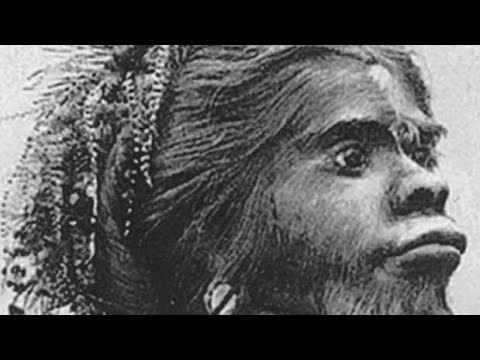
According to some experts, yeti, or "snow people", are surviving Neanderthals. A woman was considered one of these specimens., who lived in the forests of Abkhazia even before the revolution. By researching the "biography" of Zana and her children, whom the yeti allegedly gave birth to after, how the locals caught her, Soviet scientists were engaged only in the early 1960s.
Legends of the village of Tkhina
AT 1962 year, the capital's professor Alexander Mashkovtsev came to the Abkhaz village of Tkhina, who was among the first visitors from the "mainland" to learn the legend of Zana. At first, all the studies of Mashkovtsev and his colleague cryptozoologist Boris Porshnev were based on the stories of local residents.. As Russian entomologist Vitaly Tanasiychuk wrote in his book "Incredible Zoology", old-timers described a wild woman, as a creature with black or dark gray skin on the face and black-reddish hairs on the body. According to the villagers, Zana had a powerful physique and incredible strength..
From the stories of old people, which at that time was from 60 to 130 years, Soviet scientists learned about, that Zana was caught by the Abkhazian prince Achba. For a long time, outlandish prey passed from hand to hand, until she was with another prince Genaba, who brought the yeti to the village of Tkhina. Zana was aggressive at first., and therefore lived locked up. But soon she got used to her fate and freely roamed the neighborhood.. Some men took advantage of it, as a result of which Zana gave birth to five children. She allegedly drowned her first child by accident, and the rest were taken away from her. They grew up in foster families.
Zana's grandchildren
Boris Porshnev managed to meet Zana's grandchildren, that, as described by the scientist, had black facial features and curly hair. They all turned out to be the children of Zana's youngest son., Hvita, who lived in his native village of Tkhina until the end of his days. According to Porshnev, descendants of the wild woman, like herself, had amazing physical strength. Eldest son of Khvit, Shalikula, could with his powerful jaws lift a chair with a person sitting on it. It was Porshnev who was one of the first to put forward a version that, that Bigfoot is none other, like a real Neanderthal.
In the seventies, the opinion of Porshnev was supported by the historian Igor Burtsev. Burtsev also talked with Zana's grandchildren, in particular, with daughter Khvita, Raisoy. The historian confirmed the words of Porshnev concerning the appearance of the descendants of the "Snow Woman". Little of, Igor Burtsev even managed to find the graves of Zana and Khvit. Scientists removed only skulls from underground, but they were quite enough for that, to dispel the sensation. But this has already happened today and with the participation of foreign experts..
Not yeti, and African
Anthropologist Stanislav Drobyshevsky, cranial examiner, confidently stated, that they belong to the representatives of the genus homo sapiens, and not at all to Neanderthals. The latter are distinguished by a large roller-shaped brow.. There are no such ridges on the discovered turtles.. Nevertheless, the brow ridges of Zana and Khvit really turned out to be powerful.. And wide noses and embossed heads were also characteristic features of mother and son.. However, representatives of the Negroid race have similar characteristics..
Igor Burtsev studied this side of the issue and found out, that in Peter's times the "araps" really came to Abkhazia and stayed there. But that's why, as Burtsev thought, Abkhazians are familiar with dark-skinned people, and they could not confuse an African with a Yeti. Still Oxford geneticist Brian Sykes, who researched the DNA of Zana and her descendants, confidently stated, that they all not only belonged to "Homo sapiens", but in fact they were from West Africa. According to Sykes' assumptions, Zana was a slave, brought to Abkhazia by the Turks.
Yulia Popova











